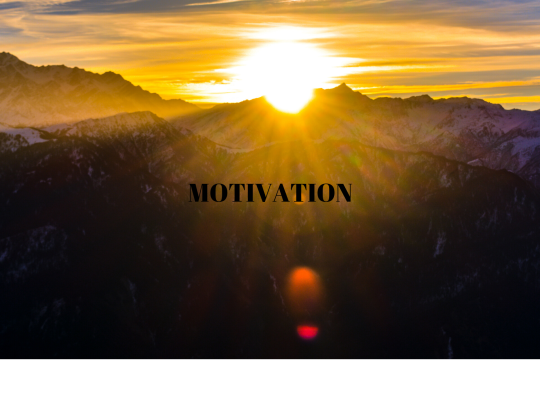The Power Of Organizational Culture In The Digital World Part 3
Share

EXTRINSIC MOTIVATION VERSUS INTRINSIC MOTIVATION
There are basically two types of motivation your employees/leaders will exhibit within your stores: extrinsic or external motivation and intrinsic or internal motivation. Extrinsic motivation is defined as when employees/leaders are motivated to perform a certain behavior or engage in a specific endeavor to earn a reward (cash, trophy, or company perk.) Or, it may be to avoid negative consequences. Intrinsic motivation is defined as engaging in a behavior because it is personally rewarding because you enjoy it or find it interesting.
There are major differences in the psychological mindsets between these two types of motivation and as humans, we all are programmed to seek out pleasure and avoid pain. Henceforth, if a majority of your store teams are extrinsically motivated, then you are going to experience some drastically inconsistent results.
This article is part of a series on the power of organizational culture. Here are the links for Part 1 and Part 2
EXTRINSIC MOTIVATION IN A POSITIVE LIGHT
We do not want to discount the positive effects of extrinsic motivation within the workplace, as there are numerous advantages to this type of behavior.
“There are specific times when extrinsic motivation (company-wide or at the store/district level) can become a trebuchet of change that will catapult your store/company to new heights.”
Some examples include:
- Employees working extra hard for an upcoming store visit seeking social recognition for an outstanding store tour.
- Employees striving to beat their best revenue week to receive a pizza party.
- Store leaders attempting to have their district take first place in a company-wide contest for bragging rights and district-wide picnic for all stores.
- Stores implementing a healthy eating challenge, so that employees can receive discounted gym memberships.
- Employees/leaders achieving “stretch goals” to receive bonuses or company prizes.
- Employee/leader trying to get promoted.
There are specific times when extrinsic motivation (company-wide or at the store/district level) can become a trebuchet of change that will catapult your store/company to new heights. This can enable your teams to expand their comfort zones, allowing your team to realize unprecedented achievements that before were previously conceived as unattainable.
The strategic paradigm I employed was to think and act like a “chameleon.” This meant I would adjust and adapt to my retail environment while implementing and executing the appropriate motivation necessary to achieve our aspirations. I suggest tapping into each individual’s motivational triggers to find out what motivates them to excel.
An 18-year-old might want to become CEO whereas the 65-year-old values autonomy, scheduling, or balance. Some employees have an extrinsic motivation to get promoted. This is perfectly fine as long as this is not their ONLY motivation. Most great employees are intrinsically motivated most of the time through their work ethic, pride, accomplishments, altruistic intentions, and internal drive.
“I want to reiterate that this type of motivation was ONLY utilized for short-term results and was NEVER used in place of good old fashion resourcefulness, hard work, or proper planning.”
Some examples are short-term immediate results required in sales, credit, or KPI’s where I would offer certain “enhancers” to facilitate the necessary competitive nature needed for results. I would offer an extra day off with pay for the top associates who received customer complimentary letters (i.e. associate provided exemplary service and the customer wrote in to express their satisfaction), achieved specific credit goals, or completed a long term project.
This would reinvigorate the associates on the importance of excellent customer service. Again, I want to reiterate that this type of motivation was ONLY utilized for short-term results and was NEVER used in place of good old fashion resourcefulness, hard work, or proper planning.
Sometimes a retail store, district, or company needs a freshly infused external motivational trigger to stimulate the competitive juices and get the employees “fired up” to achieve some monumental accomplishment. This achievement can forever improve their confidence levels when approaching similarly perceived unachievable goals.
Success is a mindset. The most successful people have a regimented mindset that they utilize to approach their goals and aspirations. They build upon their previous successful achievements, i.e. my store just surpassed $900,000.00 in sales last week which has never happened before. So, now, I am going for a cool $1,000,000.00 in sales this week.
THE OVERJUSTIFICATION EFFECT
The usage of extrinsic motivational tactics must be limited in scope and repetition to safeguard against the over-justification effect, which is when an expected external incentive, such as money or prizes, decreases a person’s intrinsic motivation to perform a task. When extrinsic rewards (such as money and prizes) are given for actions that people already find intrinsically rewarding, they will become less internally motivated to pursue those activities in the future.
Retailers/businesses must be careful with offering too many external rewards or going to the well to often to motivate their associates. Unfortunately, many retailers/businesses might already be suffering from the over-justification effect which can severely damage their employee’s natural instinctive intrinsic motivation.
“If this atmosphere continues unsupervised, then it COULD start a fecund of behaviors that will perpetuate this unfortunate cycle.”
Another detriment to providing an inordinate number of external motivators for your associates to become fully engaged is the chance that your stores/company might contribute to a conditioned reflex, i.e. contiguity (which means that any two ideas will get associated if they occur in the brain at the same time.)
If this atmosphere continues unsupervised, then it COULD start a fecund of behaviors that will perpetuate this unfortunate cycle. I know many retailers/businesses that are utilizing these types of external behaviors through incentives (coupons, discounts, and special sales days) to attract customers. At the same time, these retailers “could be” contributing to conditioning their customers to ONLY SHOP when there are incentives.
The over-justification effect can be utilized excessively by stores (to motivate the employees) or by the organization (to motivate the customers). The retail sector is at an economic crossroads at this time while most retailers are struggling to maintain market share and keep their heads above water. Conversely, can you blame them for offering discounts and using other competitive strategies to lure customers and increase top-line revenue?
There is a razor-thin line that exists between executing properly planned economic tactics to maximize your offerings or becoming the retailer who is precipitously damaging the long-term reputation of your company. By repetitively engaging in these short-term measures, you run the risk of diminishing/tarnishing your corporate brand. The key is to have a healthy balance with your promotions.
EXPLORING INTRINSIC MOTIVATION
Intrinsic motivation is defined as engaging in a behavior because it is personally rewarding because you enjoy it or find it interesting. This type of motivation comes from within the associate/leader and is long-lasting, which can propel your associates/leaders through the boisterous periods your company is going to experience with grace and ease.
A retail company with a strong commitment to providing an inclusive and rewarding atmosphere, which is built upon a solid foundation of organizational culture, will always have a loyal employee base. They will weather the storms of uncertainty because they are intrinsically motivated to come to work and excel.
Intrinsic motivation should encapsulate 95% of your employee’s motivation which will allow them to express their creative ideas and feel like they are a part of a team. The first key driver in ensuring your store/company is fostering an environment of intrinsic motivation is being able to sincerely align your corporate mission with your own employee’s values.
Is your company showing compassion for others, caring for the environment, and exhibiting honest and ethical behavior in your interactions with others??? The second key driver is to become enthusiastic about guaranteeing that the environment you provide your associates encompasses the three main motivational factors of autonomy, mastery, and purpose.
All human beings are intrinsically motivated to engage in certain tasks in their lives from which they derive pleasure and that DO NOT offer any external rewards, e.g., hobbies (sports, games, or activities), passions (painting, woodworking, or playing the piano) and aptitudes that make them feel alive and purposeful in life.
“The carrot or stick approach is a fully executed form of extrinsic motivation intended to solicit an immediate and desirable result.”
I vividly remember during my retail days that whenever an immediate result was needed or required, most of my superiors would always implement the “carrot or stick” method to achieve certain results. The carrot or stick approach is a metaphor for the use of a combination of reward and punishment to induce a desired behavior. It is based on the idea that a cart driver might activate a reluctant mule by dangling a carrot in front of it and smacking it on the rear with a stick.
The carrot or stick approach is a fully executed form of extrinsic motivation intended to solicit an immediate and desirable result. This form of motivation can create a hostile and competitive environment that will exclude some associates because of the raw energy exhibited and the perceived fear that is sometimes present with this method of motivation.
This type of approach primarily involves a “dealing in absolutes atmosphere” with regards to specified achievements or economic aspirations; consequently, creating a chaotic situation that will instill a feeling of animus in some of your associates. This approach can also obfuscate your store/company values, which could unintentionally equivocate some disingenuous tactics for achieving victory from your associates/leaders.
I rarely implemented the stick approach throughout my retail career. However, I would, in certain circumstances, utilize the carrot method to provide the impetus needed to realize herculean accomplishments. When used judiciously, the carrot method did bolster the confidence or self-esteem of my teams.
The antithesis of healthy confidence is hubris. Moreover, I wanted to precaution against utilizing the carrot method too frequently to achieve desired results, even though it was extremely tempting during challenging economic times.
I wanted to reiterate the importance of marshaling your motivational methods around intrinsic measures. These convictions are aligned with your employee’s values to ensure that they can tap into their own internal pool of energy to accomplish your organizational objectives.
The extrinsic/intrinsic motivational protocols can become a “slippery slope” to navigate when retail leaders are facing tremendous pressure from their superiors to achieve financial metrics. This can challenge the integrity and resiliency of the managers to stay committed to their internal convictions.
There were many times when I thought about “going to the well one more time” to achieve a certain outcome. On the other hand, I realized the message I would be sending to the other leaders within my store. Moreover, I would not be setting an appropriate example for them to follow. As a retail store manager, you cast a large shadow with EVERYONE in the store watching you and how you react to or handle intense situations.
Do you say one thing and do another? Are you committed to your convictions until the stuff hits the fan? Do you radically alter your intentions when faced with seemingly insurmountable circumstances? It is during challenging situations that our principles are put to the test and the associates are receiving their guidance from the store manager’s actions. They follow what you do, not what you say.
I hope you enjoyed this article.
EMBRACING CHANGE IN THE RETAIL SECTOR
This post first appeared on LinkedIn.



















Follow us on social media